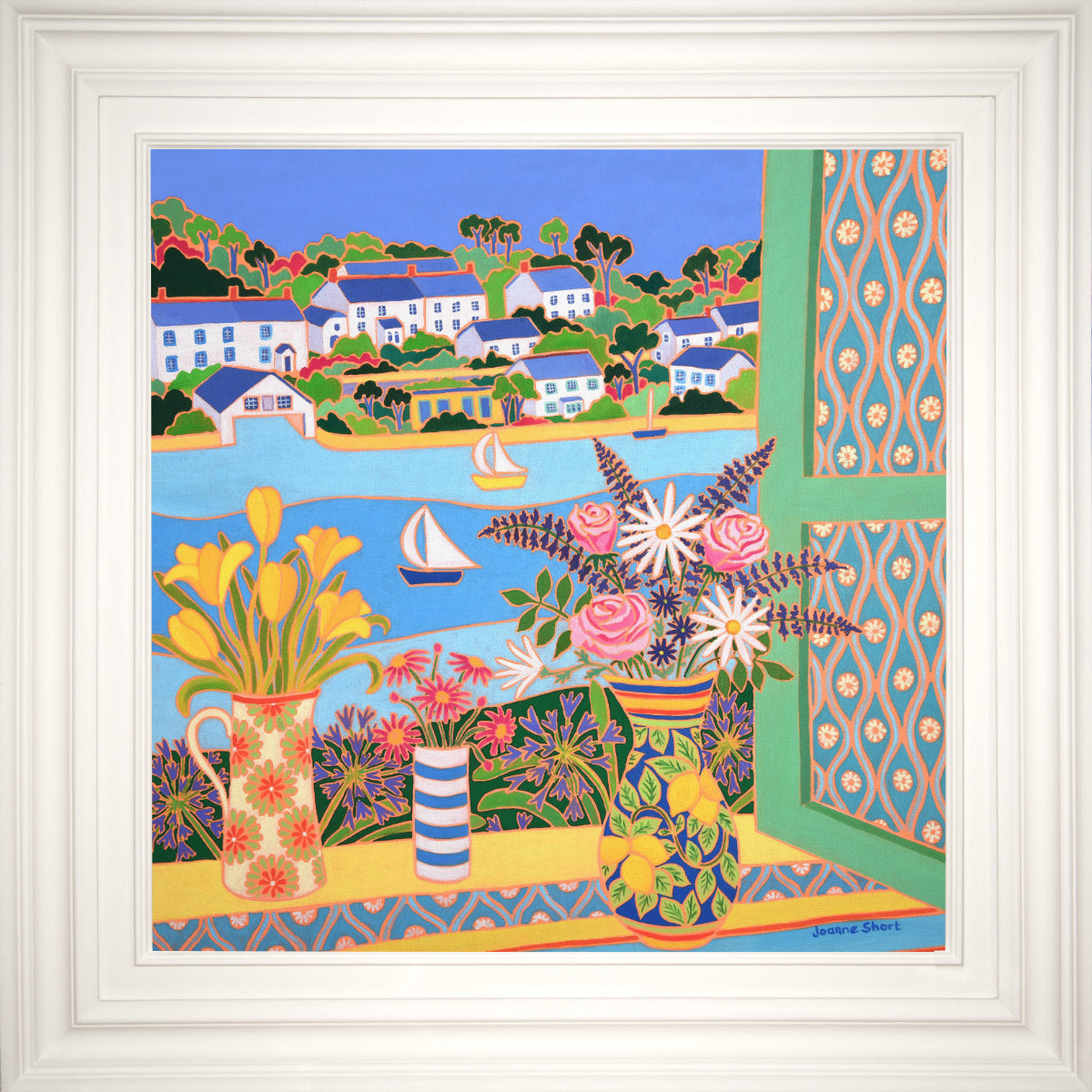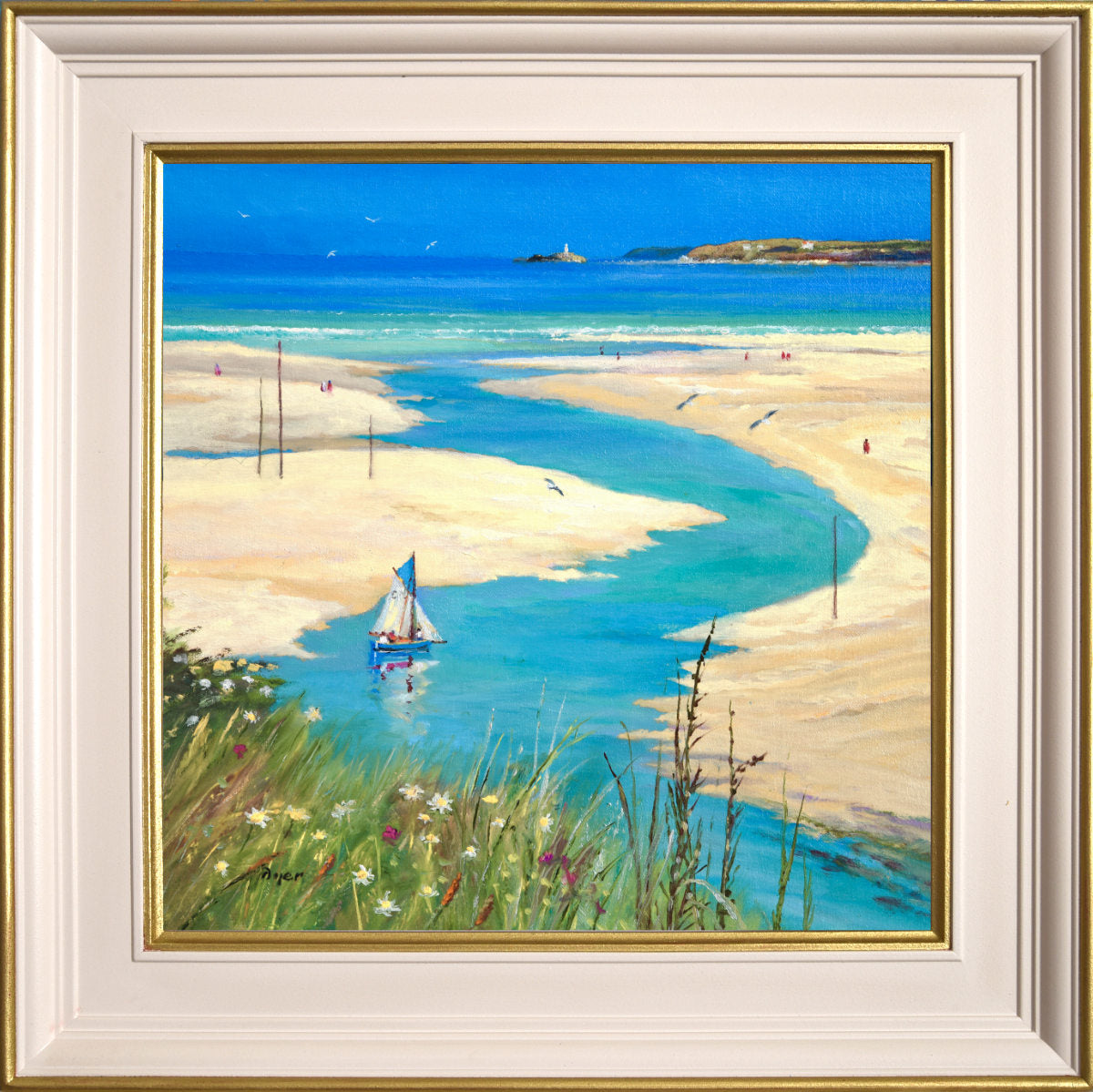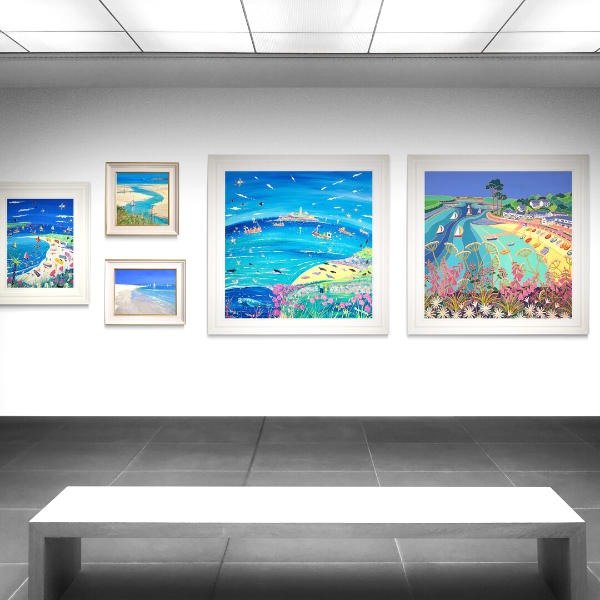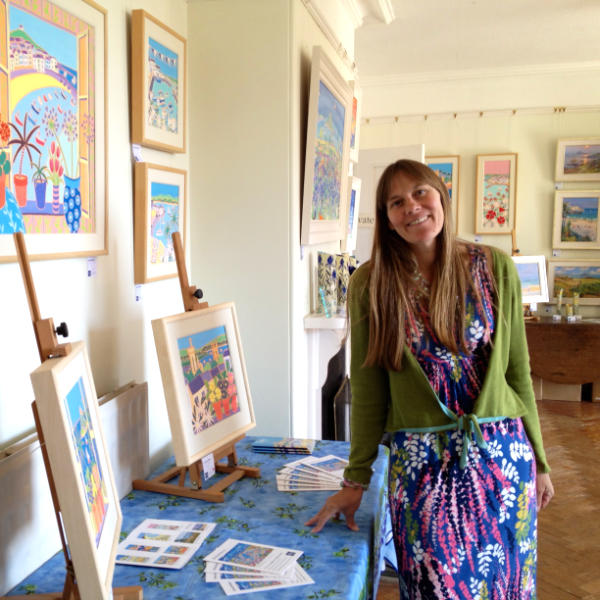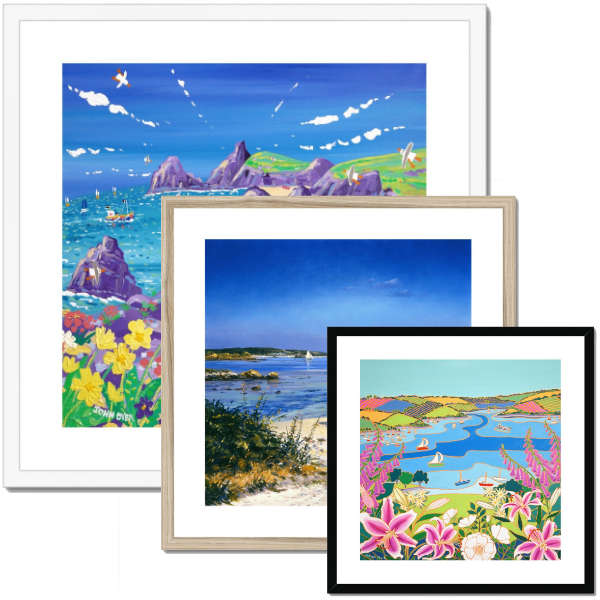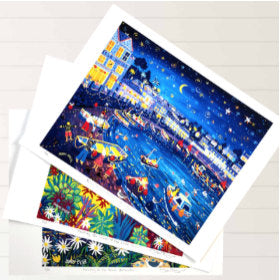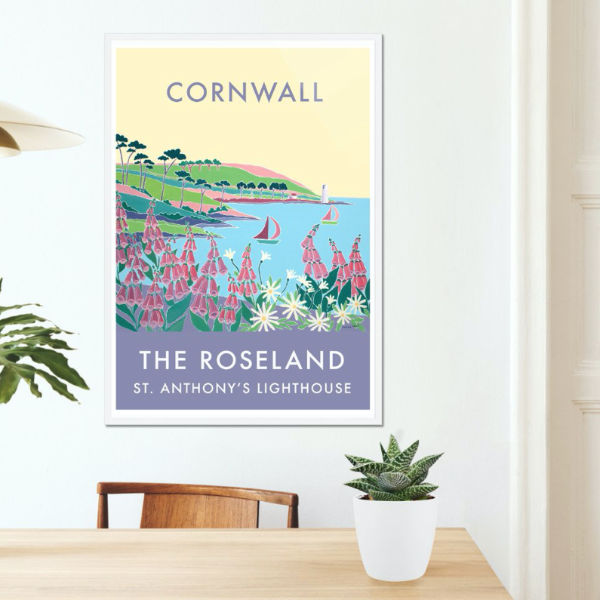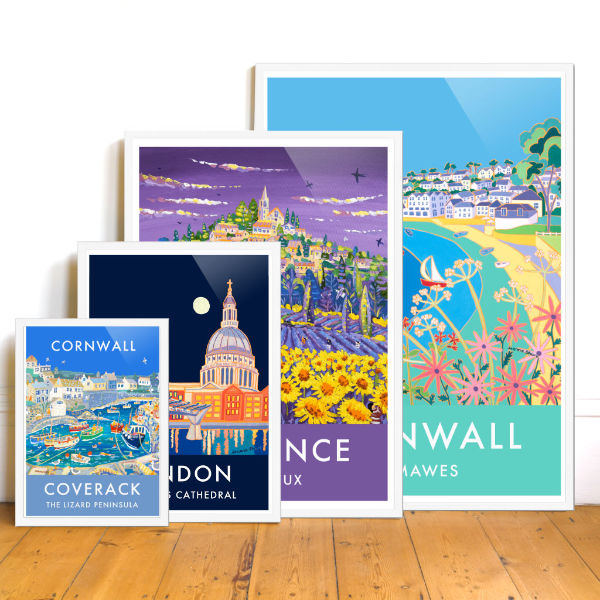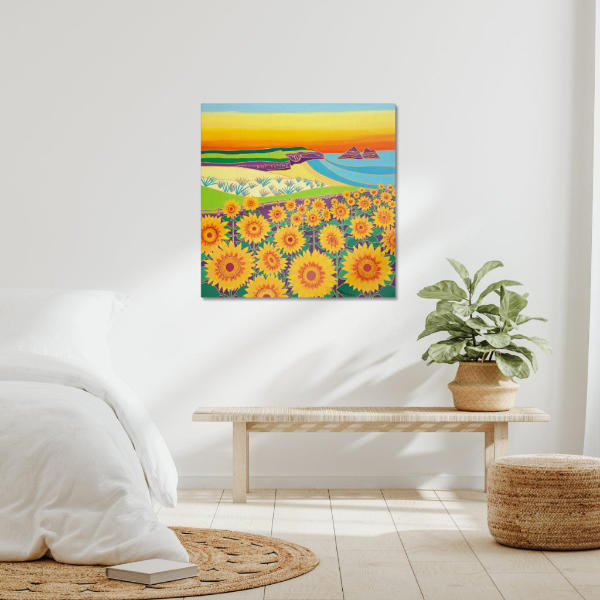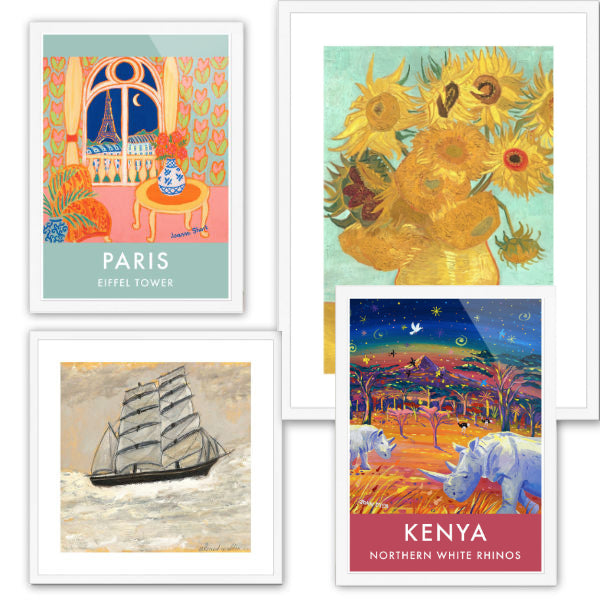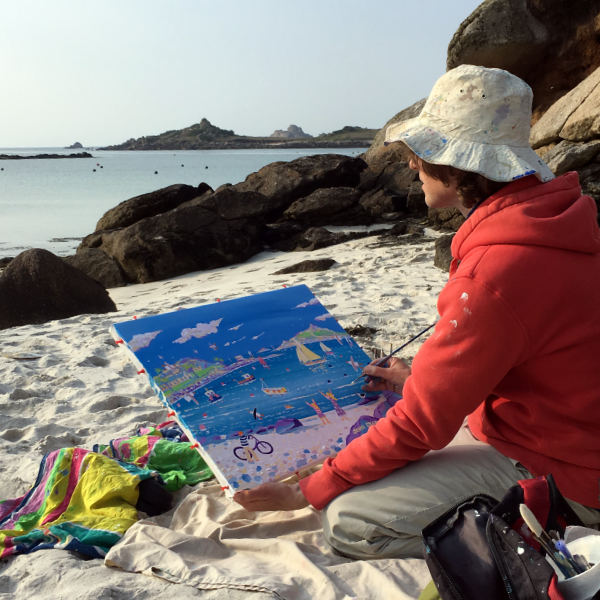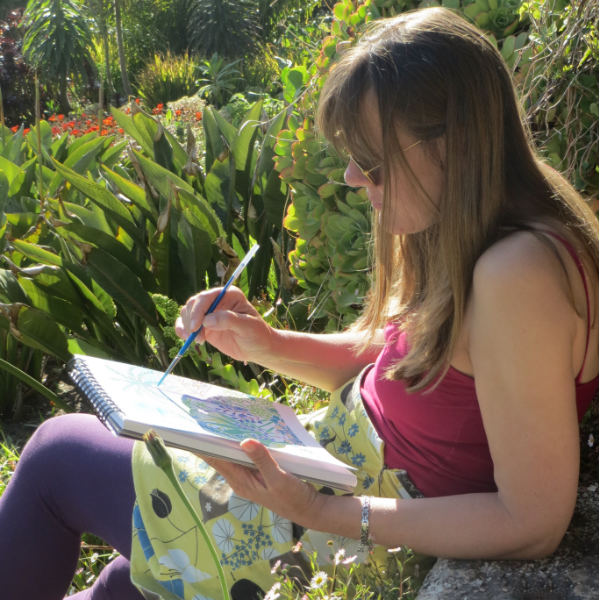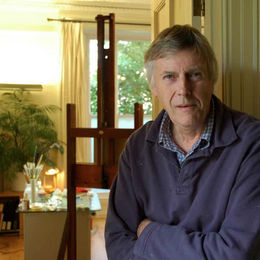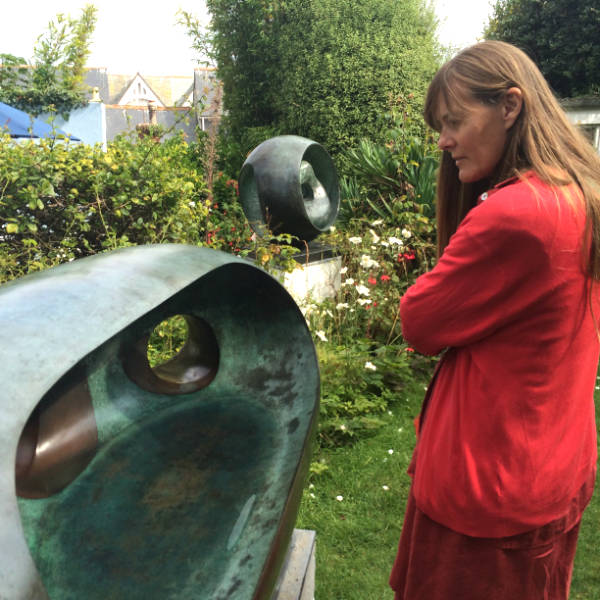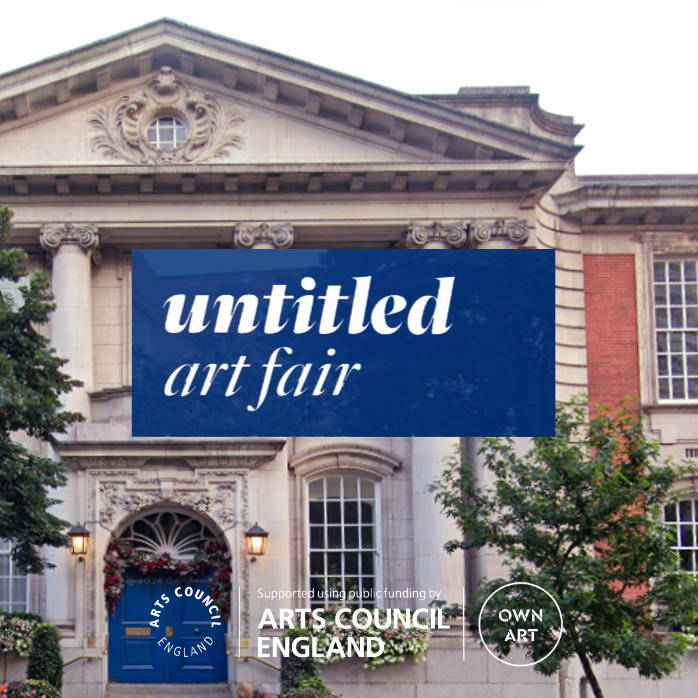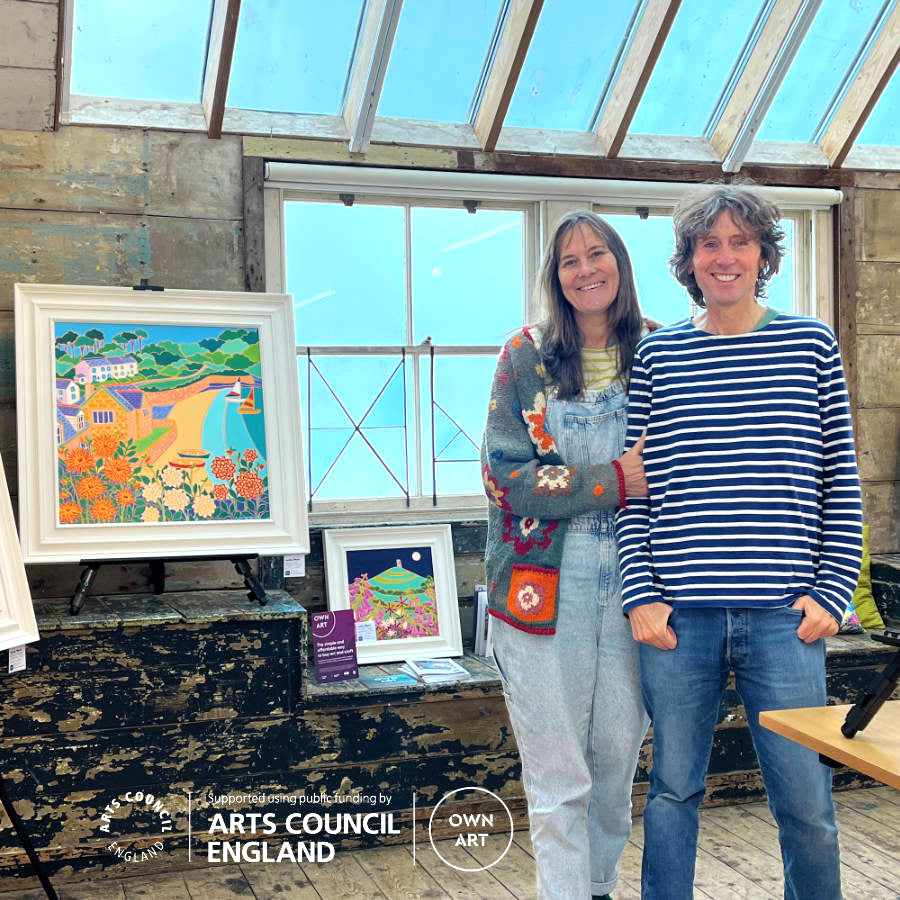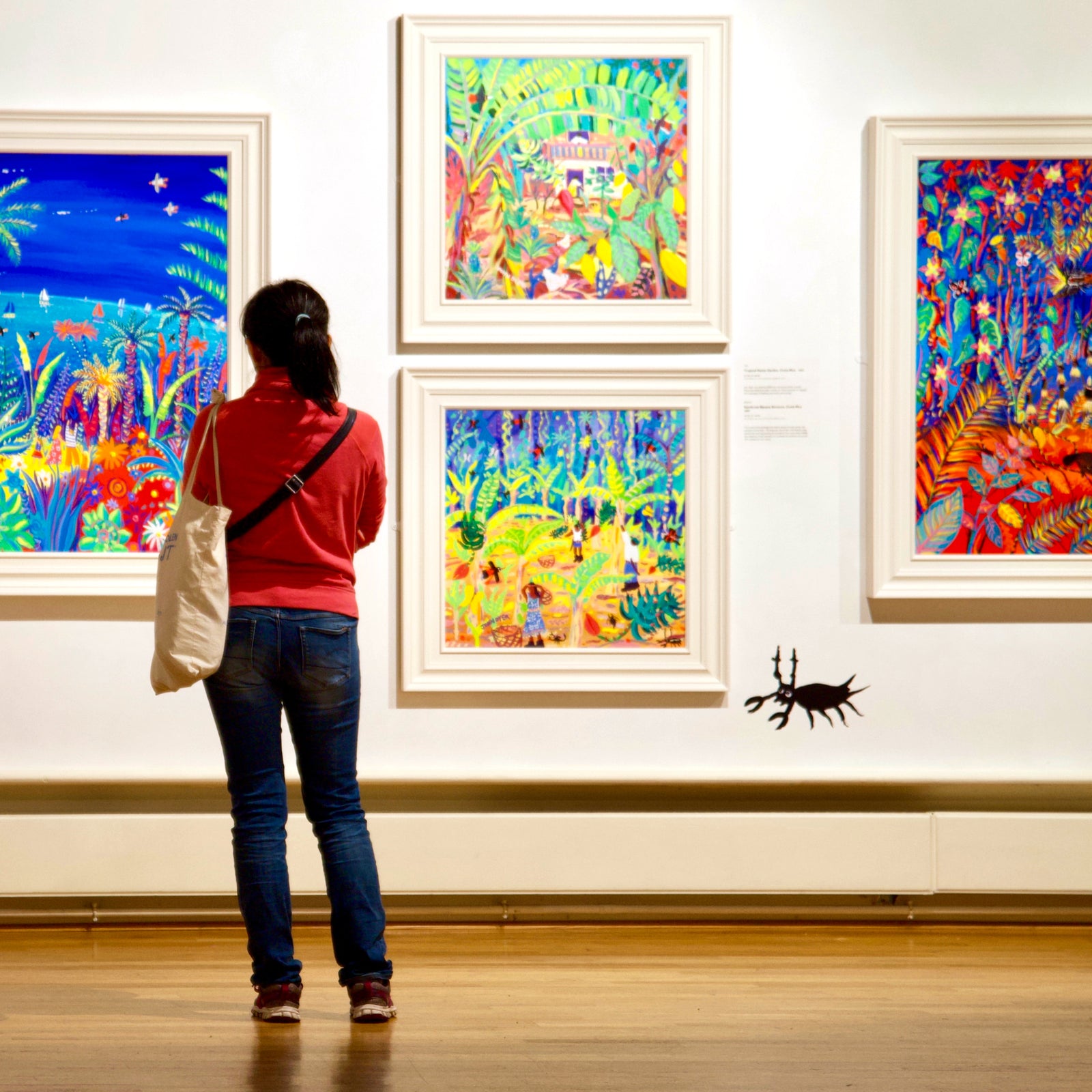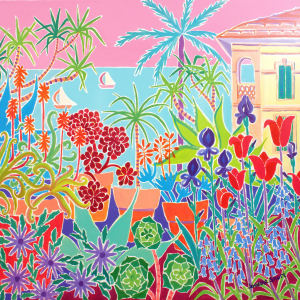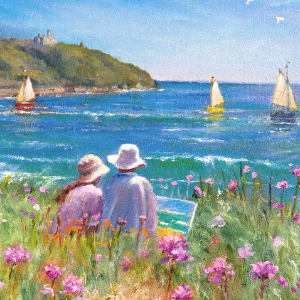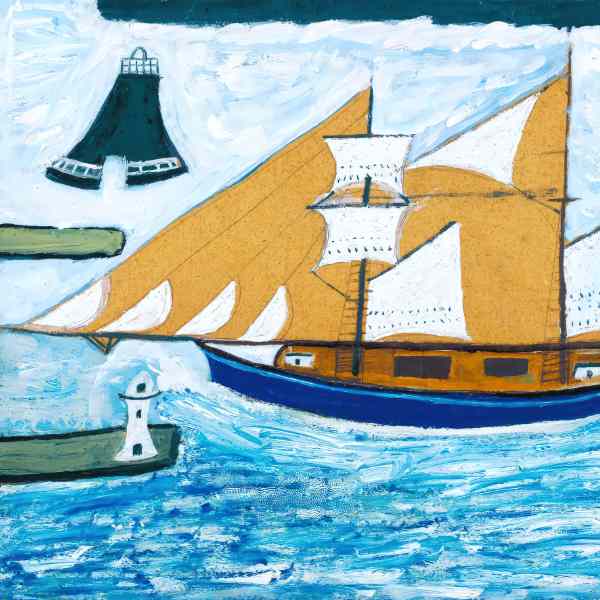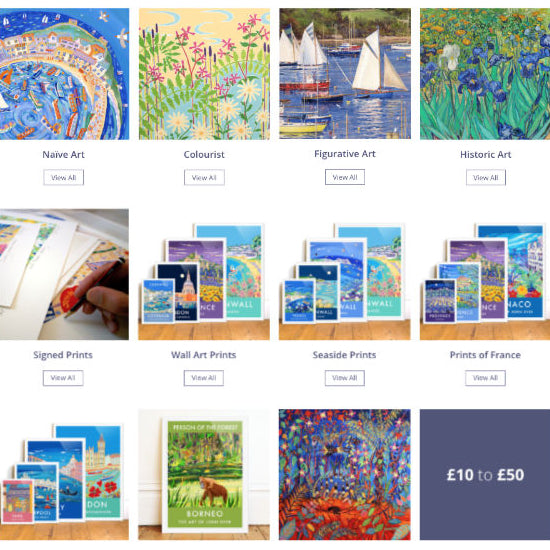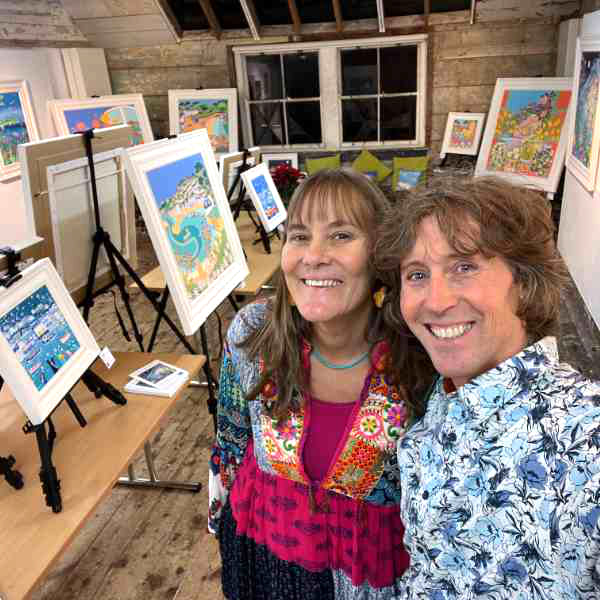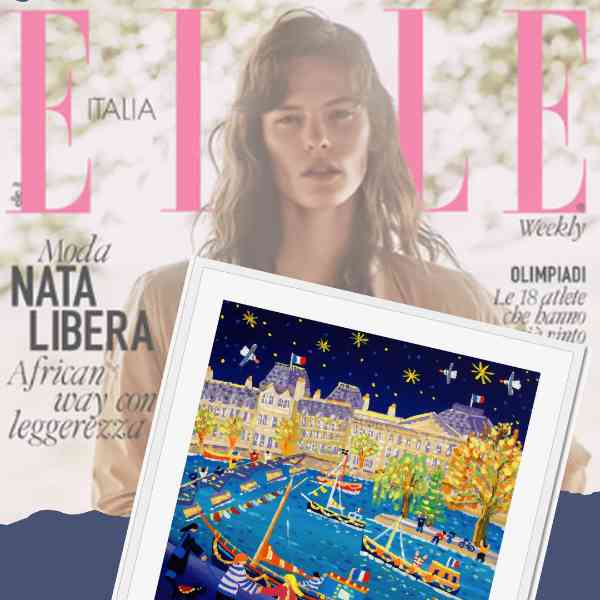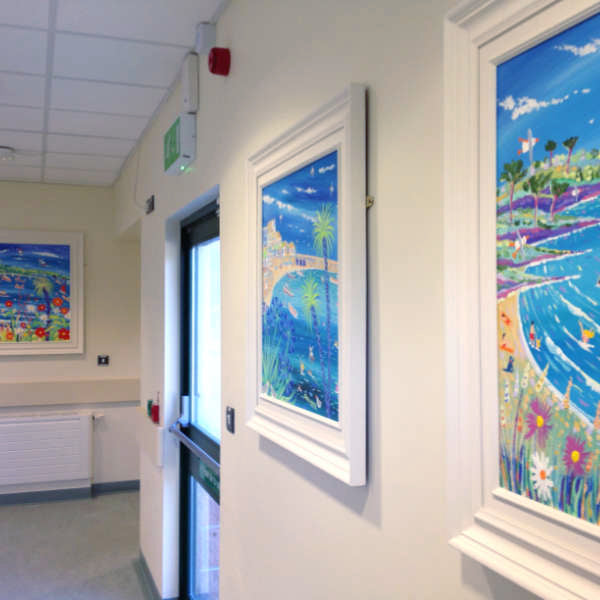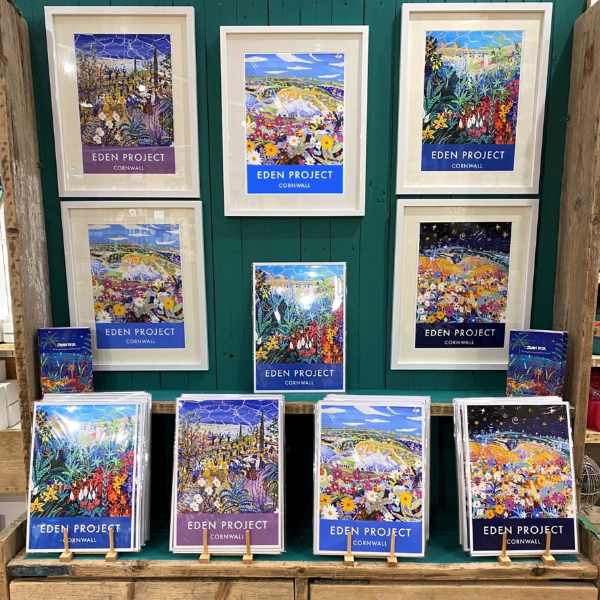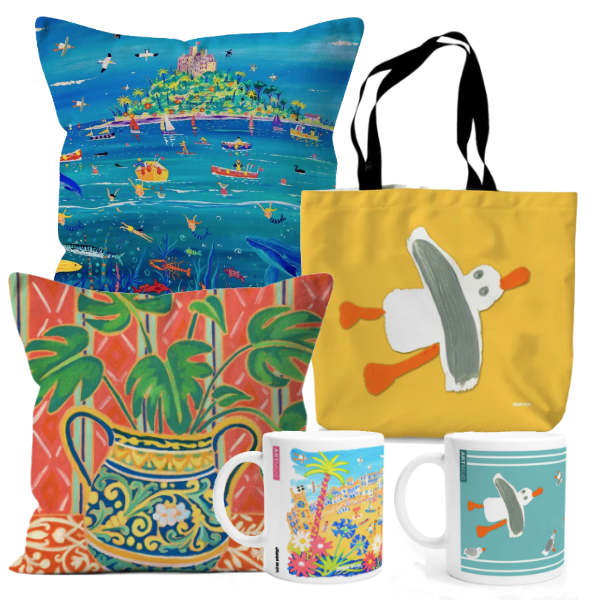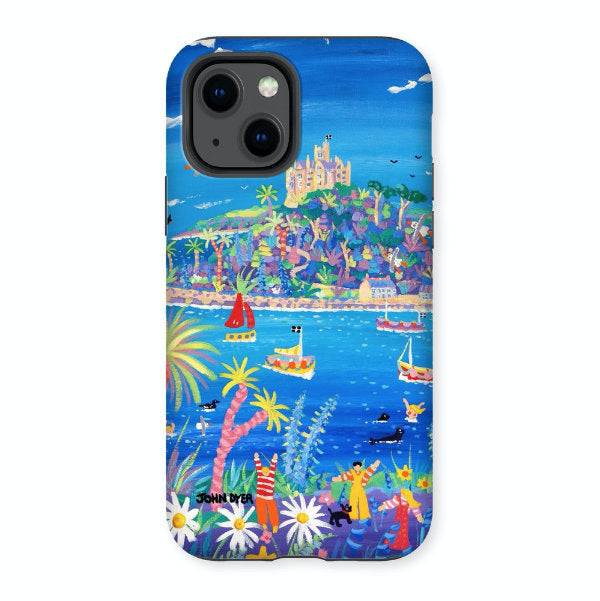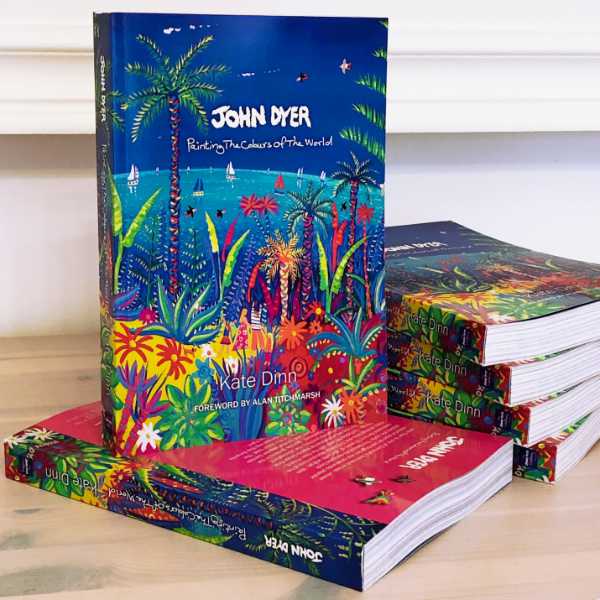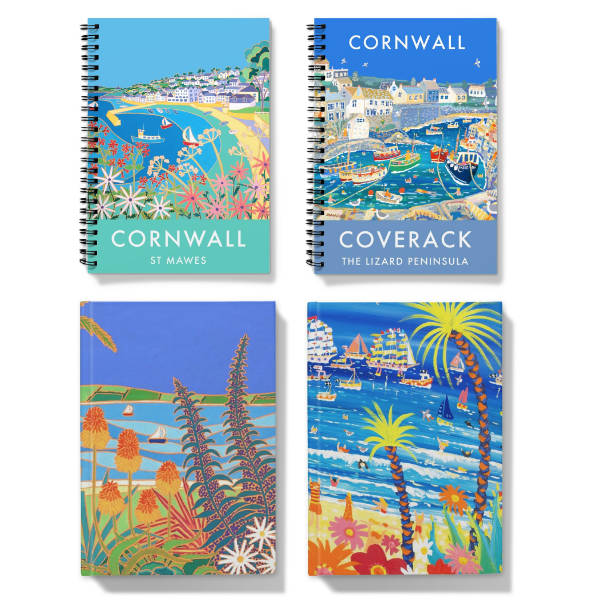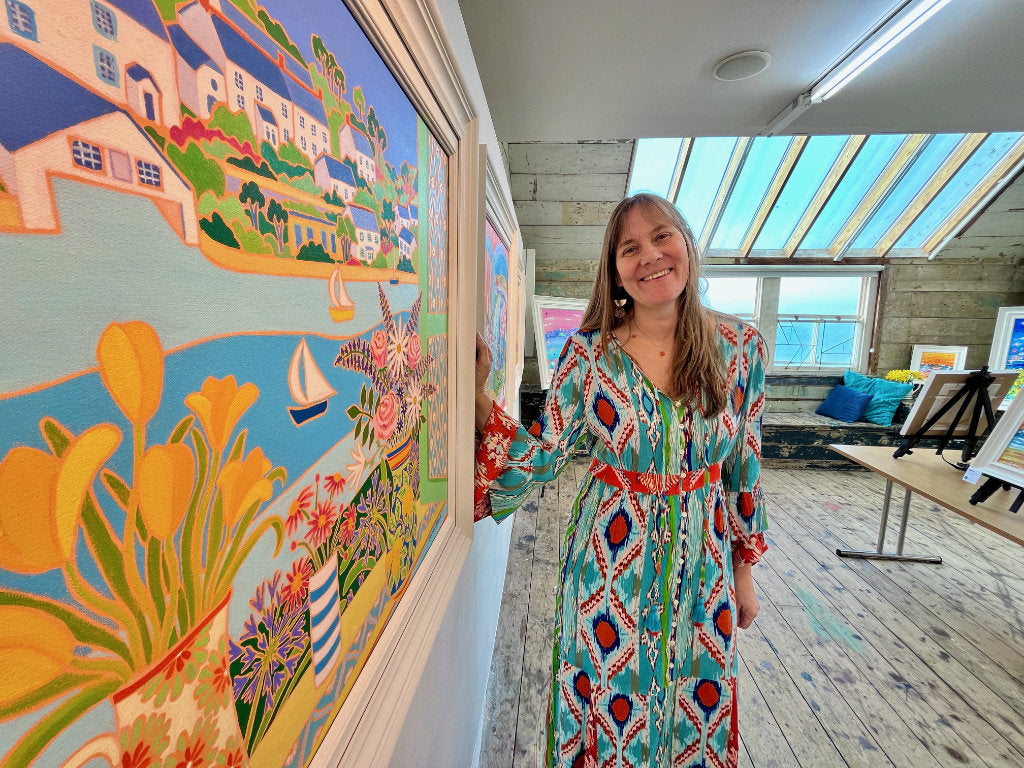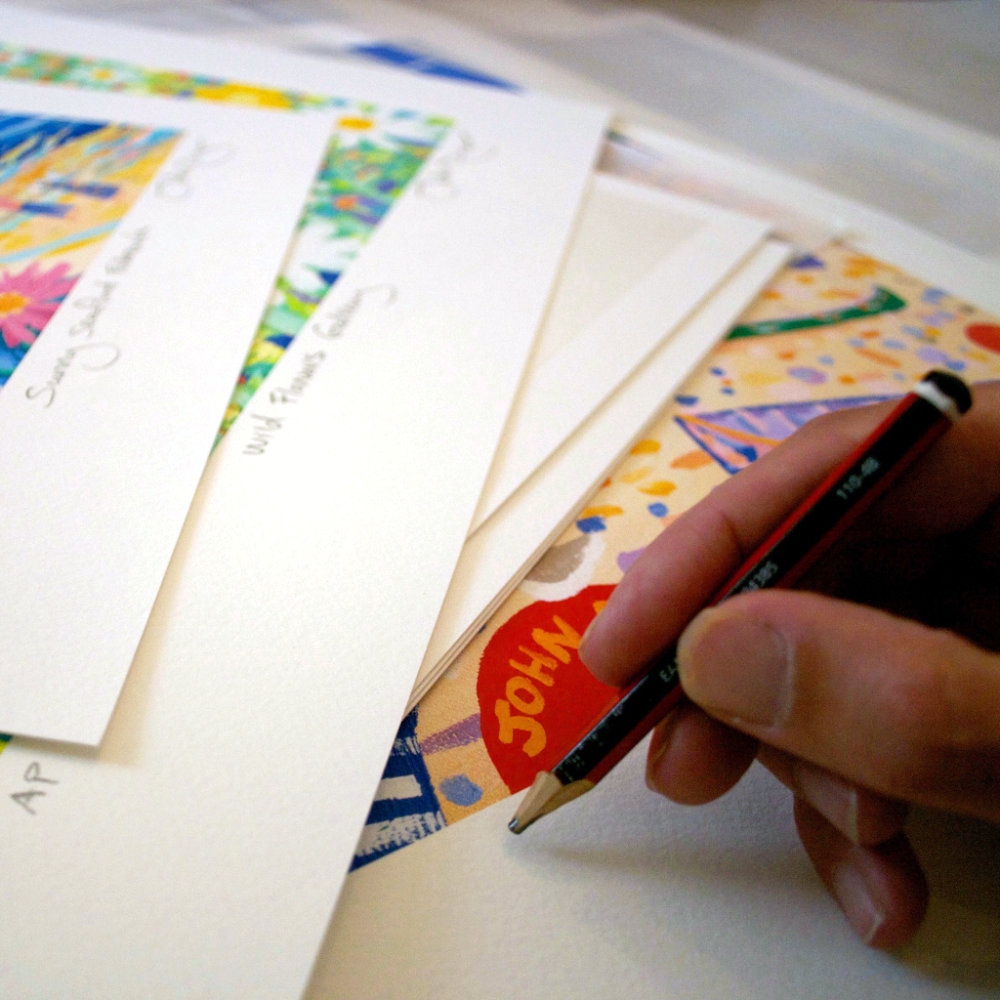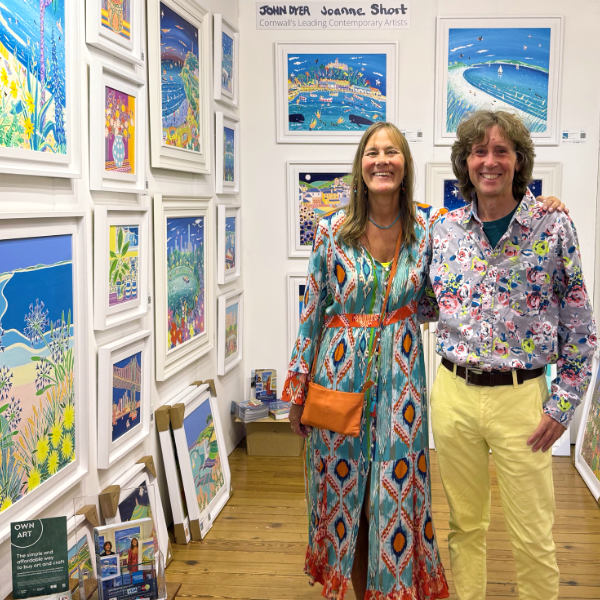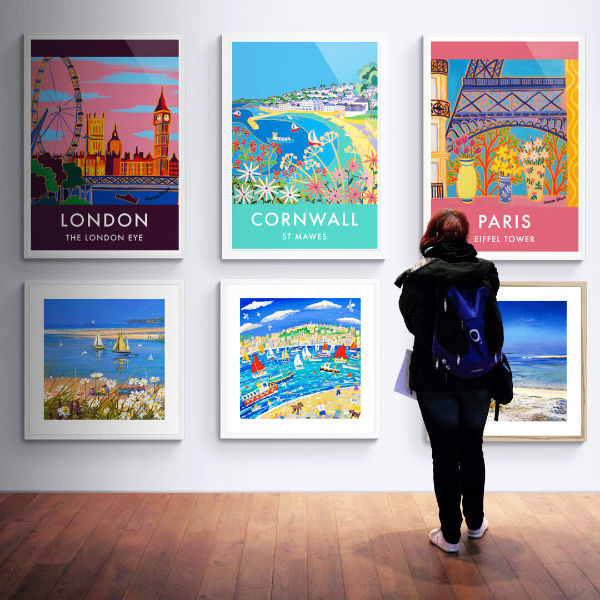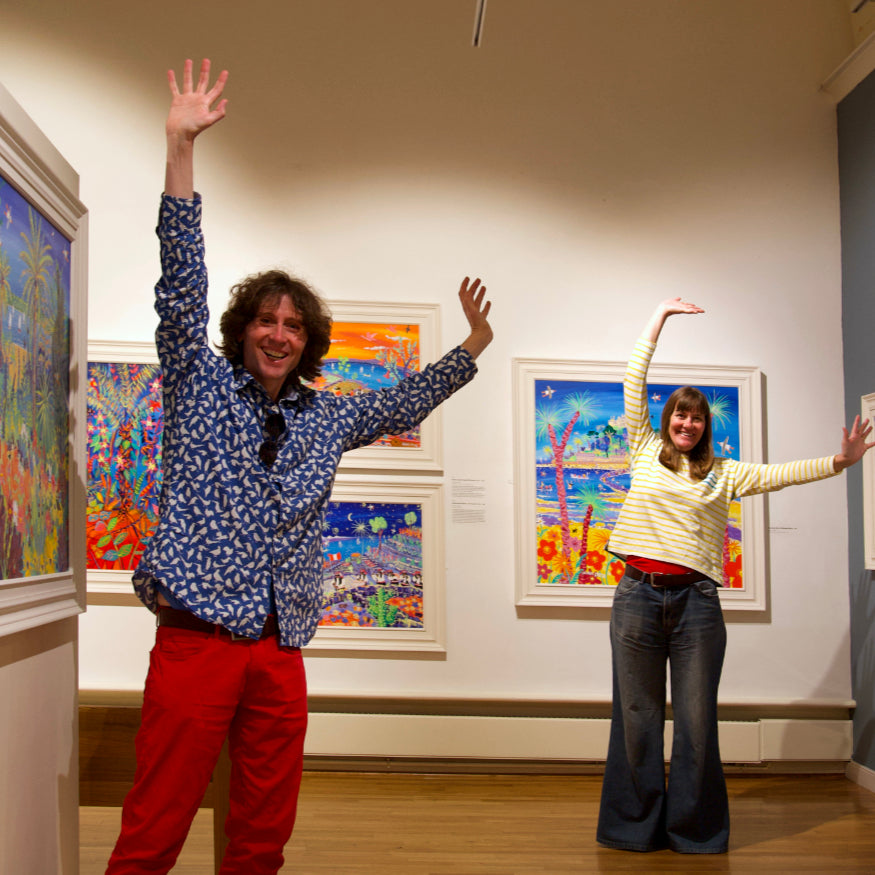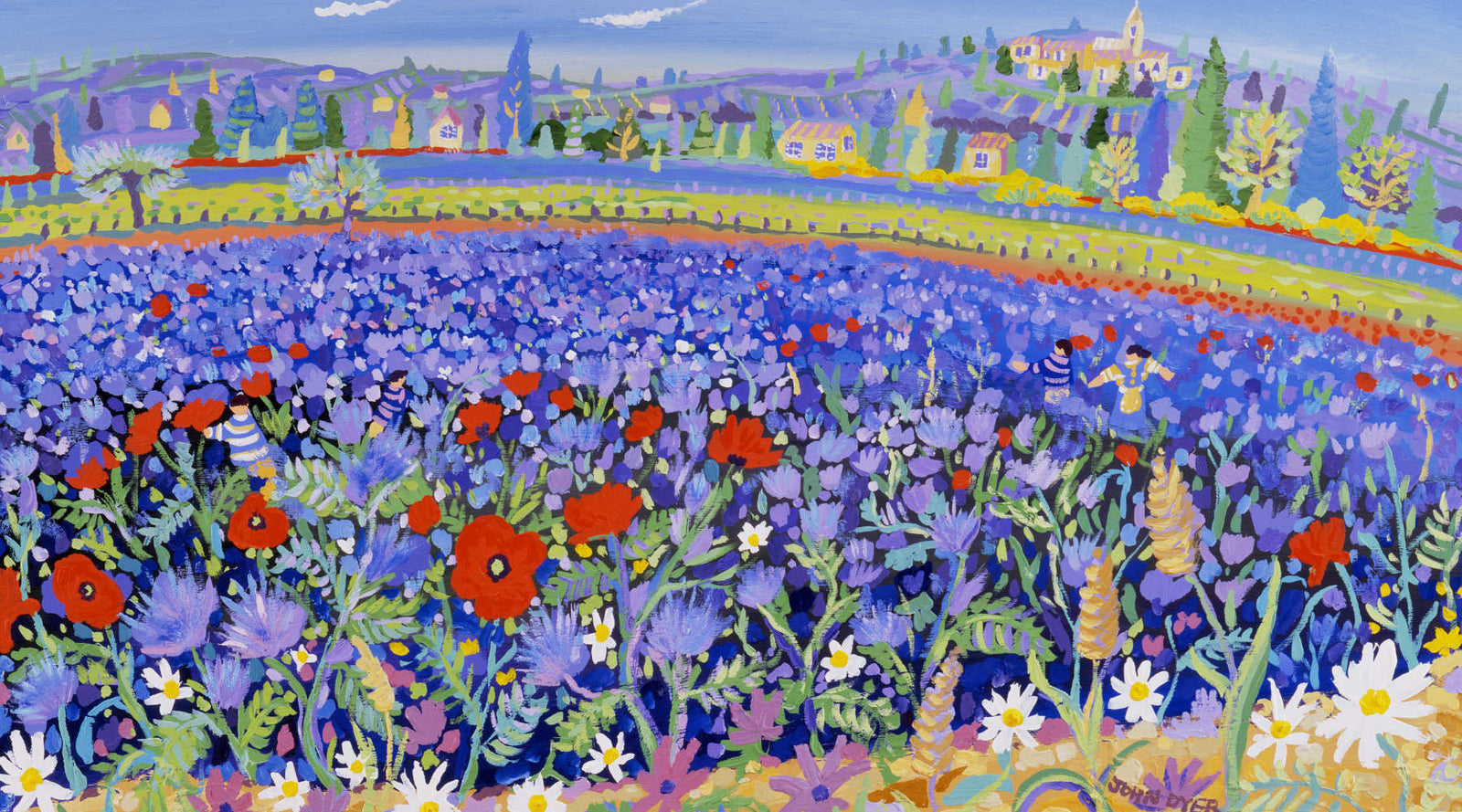
Above: Art Poster Print by John Dyer. 'Flowers for Honey, Cairanne, Provence.'
There is something about the French countryside that inspires artists to capture its beauty on canvas. Whether it is the rolling hills of Provence, the rocky coastline of Brittany, or the bustling streets of Paris, there is a unique magic in the air that cannot be found anywhere else. In this blog post, we will take a look at some of the paintings and prints created by our gallery artists John Dyer, Joanne Short and Ted Dyer over the years. We will also explore why these landscapes have been such an inspiration for them.
The history of our French landscape painting in the French countryside

Above: Photo of John Dyer and Joanne Short painting at Gigondas n Provence in September 1998.
Over the years John and myself, and Ted too, have been drawn to the beauty of France and have travelled around the country enjoying the changing landscape, often capturing it in paint. Our favourite places are Provence with its patterned landscape of vines and olive trees, and areas of fruit trees and lavender, and Brittany with its rugged coast, long beaches, quaint harbours and slate-roofed cottages. And who could forget the bustling beauty of Paris, steeped in history and filled with magnificent architecture? The light in France is always so special, whether it is the strong sunlight of the north or the softer light of the south, it is an inspiration to painters. The colours are intense and vibrant and we never tire of seeing them.
Brittany
In 1998 John and I had a camping holiday in Brittany; we cycled around the area drawing and painting as we went. We have always enjoyed painting en plein air and the weather lent itself to us being able to do this.

Above: Photo of artists John Dyer and Joanne Short in Brittany in the summer of 1998

Above: photo of John painting at Auran, Brittany, 1998.
Famous painters in Brittany
On the Atlantic coast of Brittany, where the river meets the sea is the small town of Pont-Aven where a group of artists set up a colony in the 1860s.
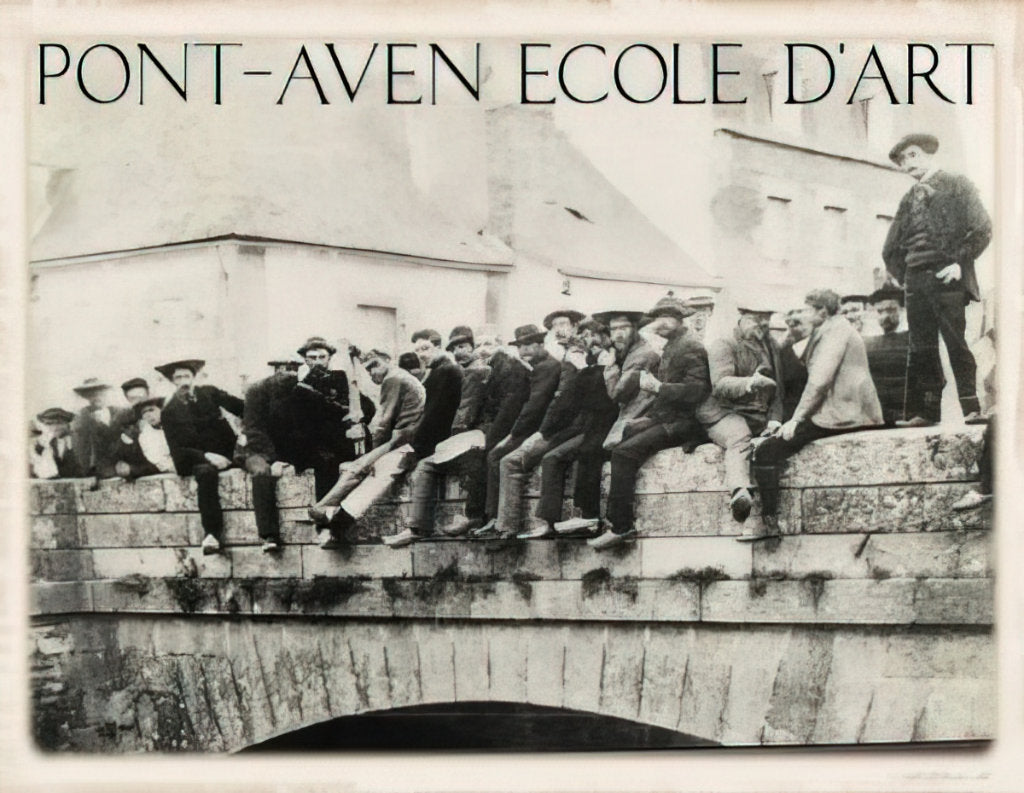
Above: Historical photo of a group of Artists from the Pont-Aven School of Art in the 1880s
Due to the improvement of the railway system during this period, Parisian painters spent their summers on the coast or in the countryside. This enabled them to shake off the classical traditions of studio painting and practice their timeless landscapes and plein air painting. The first train from Paris to Quimper ran in 1862.

Above: Paul Gauguin,' Watermill in Pont-Aven', 1894, Musée d'Orsay, Paris
Between 1886 and 1894, Paul Gauguin visited Pont-Aven numerous times to paint. During this period french landscape painting underwent quite a serious change. While painting at the Pont Aven colony Gauguin created 'Synthetist painting', a style of post-impressionist painting. This style of painting used areas of flat colour with no shading or attempt to create depth in the picture plane.
Above: Paul Gauguin,'Haystacks in Brittany', 1890, National Gallery of Art, Washington, USA. Available as an open edition art print.

Above: painting by John Dyer of La Trinité Sur Mer, Brittany, 1998.
From this came a group of french artists calling themselves 'Nabis' - a Parisian-based group of artists influenced by symbolism and decorative art with their own artistic experimentation. These artists include Maurice Denis (1870-1943) who also visited Pont-Aven, Pierre Bonnard (1867–1947), and Edouard Vuillard (1868-1940). It was at Pont-Aven that Serusier composed his influential work The Talisman (1888, Musee d'Orsay, Paris) This is a historical landscape painting that has influenced many following artists.

Above:' The Talisman' by Paul Serusier, 1888
Provence
In 1997 John and I had our honeymoon in Vaucluse, Provence. This inspired us to travel back to the same area of France several times and paint several series of paintings. In 1999 we had an exhibition of paintings of Provence in London, alongside Ted Dyer, John's father. We were all inspired by the beauty of the surrounding landscape - the vineyards, olive groves, fruit orchards and stunning mountain top villages. Painting where famous artists have painted and exploring elements of the french landscape has always been an honour. these subjects in art have been studied over and over again, and each and every artist produces their individual style.
Above: Ted Dyer open edition print of his painting 'Lavender-time, Provence'.

Above: Photo of artist Ted Dyer with his wife Vivien, painting in Provence, 1998
Above: Cine film shot in 1998 and 1999 in Provence France showing artists John Dyer, Joanne Short and Ted Dyer painting in the French landscape.
Above: Joanne Short art print 'The Old Town, Vaison La Romaine, Provence'.
Marc Chagall (1887-1985)
When the war broke out in 1939, Chagall, his wife Bella, his daughter Ida and her husband Michel Gordey, fled Paris to settle in Gordes, where Chagall purchased a house in this charming provençal town in which he hoped to safely spend the duration of the war.

Above: photograph of Marc Chagall outside his studio in Gordes, 1940, (United States Holocaust Memorial Museum, courtesy of Cynthia Jaffee McCabe)

Above: Corbeille au soleil (Gordes), ca. 1938-1939 Gouache, watercolours and pencil on paper, Marc Chagall
In this painting the basket full of juicy plump fruits seem to be waiting to be eaten by the person who will sit in the empty chair on which a shawl has been thrown. The idea of freedom and escape to another brighter world, hinted by the open window, is further enhanced by the association of fruit with plenty, pleasure, life, and renewal. Despite the realism of this scene in sunny Gordes, the artist takes us into his dreamy world as the fruit basket and the whole setting appear to float in space, very typical of Chagall's work.
Above: Original painting by Artist Joanne Short. 'Purple Iris, Gordes, Provence'
Above: Limited Edition French Print by John Dyer. Cycling through the Lavender, Gordes, Provence
Paul Cezanne (1839-1906)
Paul Cézanne (1839–1906) was one of the most influential artists in the history of modern painting. His unique method of building form with color and his analytical approach to nature influenced generations of avant-garde artists, including Cubists and Fauves.

Above: Cézanne's painting of L'Estaque with red roofs, 1883
Cézanne painted a number of landscape paintings from 1882 onwards, mostly of his hometown Aix and the fishing village L’Estaque near Marseille. Instead of using traditional perspective, Cézanne created multiple horizontal planes to give the landscape depth and dimension.
Above: Paul Cézanne,'Houses in Provence, the Riaux Valley near Estaque', c1883, National Gallery of Art, Washington, USA. Available as an open edition art print.
Above: Limited Edition French Print by Joanne Short. Summer Sunshine, Roussillon, Provence
The South Coast of France
The South Coast of France offers many areas of outstanding beauty which many french landscape painters have explored in their art.
Many artists have painted beach scenes of Nice - the view along the famous Promenade des Anglais towards the sea, or boats in the big harbour.
Berthe Morisot (1841-1895)
Berthe Morisot (1841–1895) became a key player in the Impressionist movement, even though there was institutional resistance to female artists. However, it is her individual talent that has secured her place in the company of great 'Impressionists.' In Nice during the pinnacle of her career, she had an equal ability with oils and pastels and watercolour. Her work typically involves loose brushstrokes and acute use of colour, giving off an air as if it were effortlessly done.

Above: 'The Harbour of Nice', Berthe Morisot, 1882

Above: Another version of 'The Harbour of Nice' by Berthe Morisot, 1882
The winter of 1881-1882 was spent by Berthe Morisot and her family on the Mediterranean coast in Nice, France. When the weather permitted, she often took her plein-air painting kit outside and worked. The city’s port, a sheltered marina filled with boats, became the subject of eight watercolours and oil paintings completed during her stay there.
Above: Limited Edition French Print by John Dyer. 'French Kiss, Nice'.
Collioure
Collioure is a small, picturesque French town located in the department of Pyrenees-Orientales in the far south of France. Collioure is a Mediterranean port near France's border with Spain. In 2008 we visited this pretty fishing village.

Above: Photo of the Dyer Family in Collioure, 2008. From left to right: John Dyer, Wilamena Dyer, Joanne Short and Martha-Lilly Dyer.
Several artists were inspired by Collioure, a Mediterranean port near France's border with Spain, in the first quarter of the twentieth century. This peaceful Catalan fishing harbour had already piqued the interest of some artists before Henri Matisse and André Derain discovered its charm in 1905. This was during the early stages of their experimentation with pure colour in their landscape paintings, as well as that of other Fauves (‘Wild Beasts') which may be viewed as a flash of joyful light and colour in the growth of new artistic thinking.

Above: 'The Open Window, Collioure', by Matisse, 1905 (National Gallery of Art, Washington)
Above: Signed Limited Edition Cornwall Art Print by Cornish Artist Joanne Short. 'Glorious View, St Ives' inspired by paintings by Matisse
Paris
There are few cities in the world that can rival the beauty of Paris. The French capital is home to some of the most iconic landmarks in the world, from the Eiffel Tower to Notre Dame Cathedral. But Paris is more than just a city of tourist attractions – it is also a place where history, art, and culture come alive. The streets are lined with grandiose buildings that date back centuries, and the bridges spanning the River Seine are illuminated at night, creating a truly magical scene. Whether you are strolling through the Tuileries Gardens or climbing to the top of the Eiffel Tower, there is no shortage of beauty to be found in Paris.
Camille Pissarro (1830-1903)

Above: 'The Boulevard Montmartre, Spring', Camille Pissarro, 1896/7
Camille Pissarro painted this particular view of the Boulevard Montmartre in Paris fourteen times, each with different weather and lighting conditions. This specific painting is unique as it's the only night scene Pissarro ever created.

Above: 'The Boulevard Montmartre at Night', Camille Pissarro, 1897
The endless variations of light captured by Pissarro are evident in this nighttime painting, which depicts a crowded street scene with gas lamps and shop windows. The bright yellow gaslight of the shops' windows and the oil-burning lamps of the cabs that line the road contrast with the cool white electric street lights along the centre of the picture. The brushstrokes have an almost abstract gestural look to them, as Pissarro applied the paint as a patchwork of dashes and chevrons to represent the moving throngs and traffic, as well as the city's glittering lights. This series of painted scenes of Montmartre Pissarro studies the ever-changing movement and light in this magical city.
Above: French Signed Limited Edition Print by John Dyer. 'Twinkling Lights and Carousel Delights, Paris.' Eiffel Tower
The late nineteenth century was a prosperous time for the French Impressionists. These artists were considered radicals due to their experimental methods with brushwork, light, and color. Monet, Renoir, Manet, Degas, Pissarro and Morisot led this art movement in France by painting every-day scenes such as seascapes, gardens, farmland picnics, dancehalls and interiors
Above: French Print of the Sacré-Coeur, Paris. Vintage Style Poster Art Print by Joanne Short
Above: Limited Edition Print by Artist John Dyer. 'Under the Shade of the Olive Trees, Gigondas'.
Conclusion
The beauty of the French landscape has inspired many painters over the years, from the early days of Impressionism to our contemporary gallery artists. The light, colours and scenery of France are unique and have been captured in some stunning paintings that we hope you have enjoyed looking at. If you would like to see more, please visit our gallery website or contact us for more information.


